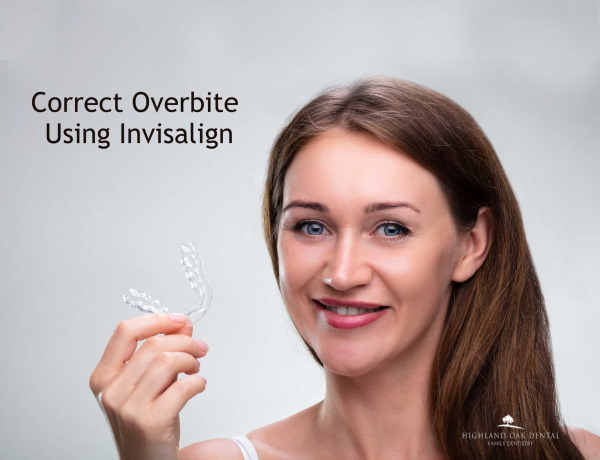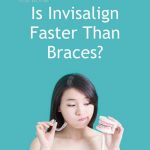An overbite is a type of malocclusion where the upper and lower teeth overlap. This is a common dental problem that amounts to over 70% of the dental problems which results in an unnatural smile. Invisalign is a relatively new treatment option and we can help you explain how these can help with overbite.
How Invisalign Fixes an Overbite
 Invisalign is a simple, but effective solution to straighten the alignment of teeth without the need for brackets or wires.
Invisalign is a simple, but effective solution to straighten the alignment of teeth without the need for brackets or wires.
The first step to know if Invisalign can fix your overbite is to arrange a consultation. If you are a qualified candidate, your dental professional will create a virtual 3D model of your teeth using a digital scan. After your treatment plan has been decided, then your aligners will be made using the latest technology.
You are required to wear your transparent aligners for 21 hours every day and only remove them when you eat or brush and floss your teeth. After a few weeks, the one you are wearing will have served its purpose and you need to wear a new set. You will need to wear a new set at least every two weeks until your teeth shift to their target position.
Learn how to choose between Invisalign and braces
Fixing other bite conditions with Invisalign
Invisalign will be able to treat the following bite issues by a qualified professional.
- Open Bite Malocclusion – This problem arises when the upper and lower jaws are pushed outward to the point where they do not contact when the mouth is closed. The effectiveness of the Invisalign treatment is dependent on the timing of the therapy.
If this disease isn’t addressed, it can lead to the following complications.
-
-
- A less beautiful smile
- Premature wear of the molar (tooth)
- Jaw joint dysfunction
-
- For Crossbite – Crossbite is when the upper teeth bite on the inside of the lower teeth. Only the front sides of the tooth are affected by this condition. We recommend having it fixed as soon as possible.
Crossbites can cause the following:
-
-
- Gum disease
- Bone loss
- Less attractive smile
- When the teeth are worn down prematurely
- Weak chewing patterns
- Asymmetrical jaw development causing irregular facial features
- Temporomandibular joint (TMJ) disorders
-
- For Underbite – When the bottom teeth overlap the upper teeth, it is called an underbite. The undergrowth of the upper jaw, lower jaw or both is the most common reason for this condition. Flared lower incisors, pointed rear incisors, missing upper part, or a combination of these factors might produce this disease.
Underbite must be addressed right away for the following reasons:
-
-
- Your smile is less attractive
- Can cause jaw-joint dysfunction
- It prevents the correct functions of the mouth
-
- Gaps in teeth, Diastema – Gaps in the teeth or diastema are dental disorders in which there is a visible space between two teeth. The front incisors are commonly affected by this condition. Diastema is a frequent and non-complex type of it that can be treated with Invisalign.
Doctors will use attachments to help with the Invisalign treatment especially when tooth or jaw mobility is needed. These are little, tooth-colored attachments that allow for complex tooth movement.
Length of Treatment for Overbite Correction
The treatment timeline for overbite depends on the patient’s condition. Commonly, dental treatment can take up to two years. A more complex condition can take more than two years to fix.
Can Invisalign Tackle These Severe Cases?
Invisalign is not a do-it-all treatment system for misalignment as there are still some conditions that are best left for traditional braces. For example, if the overbite is complex enough to necessitate surgical correction, then Invisalign won’t work. Invisalign can work with small gaps in the teeth but it may not work with big gaps. Invisalign may not be able to raise or lower a tooth’s position or fix a difference of more than 2 mm.
Sources:
- The Invisalign system in adult orthodontics: mild crowding and space closure cases. J Clin Orthod. 2000; 34: 203-212
- The treatment effects of Invisalign orthodontic aligners: a systematic review. J Am Dent Assoc. 2005; 136: 1724-1729


